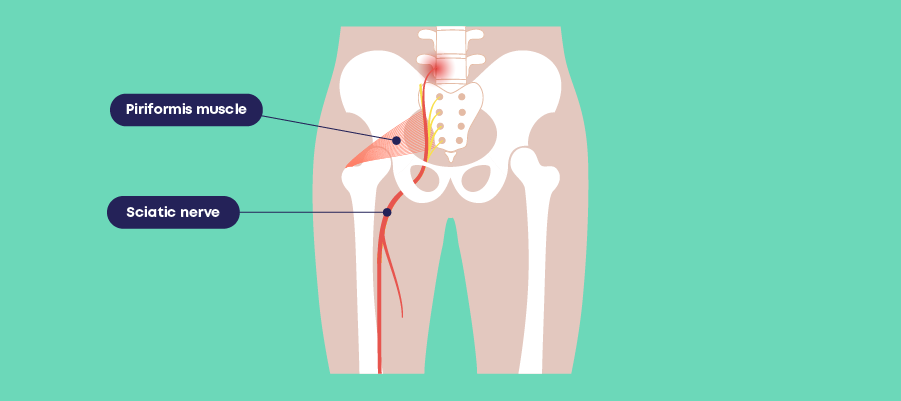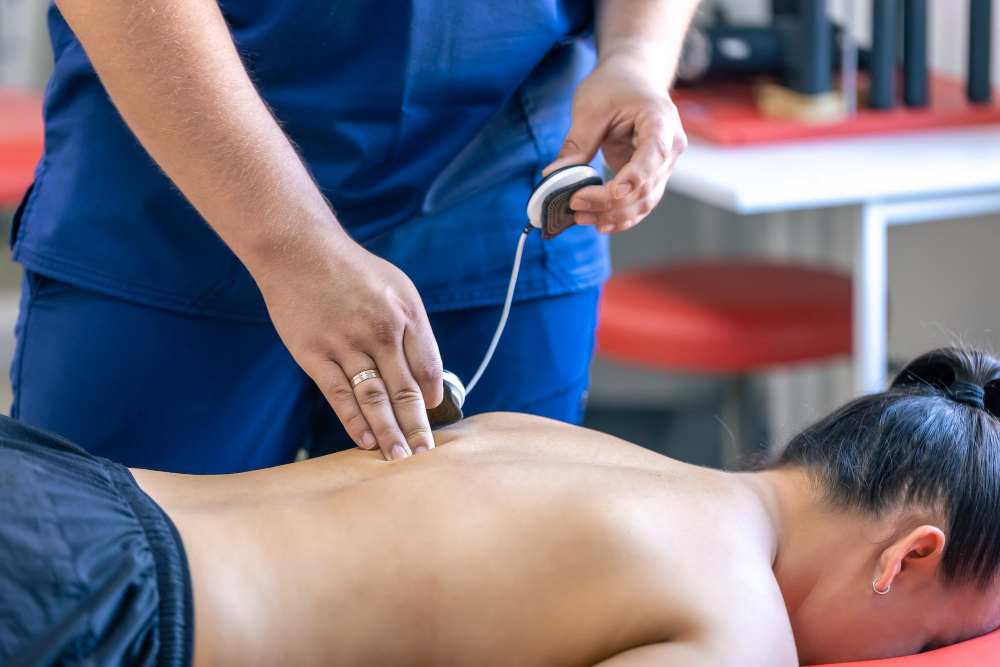Whether you’re an active athlete or spend long hours sitting at a desk, understanding piriformis syndrome and its causes can help you find relief and prevent future occurrences.
In this article, we’ll delve into the symptoms, causes, treatment options, preventive measures, and effective stretches for piriformis syndrome. So let’s get started!
What Is Piriformis Syndrome?
Piriformis syndrome is a condition that affects the piriformis muscle, a small muscle located deep in the buttocks. The piriformis muscle plays a vital role in stabilising the hip joint and aiding in the rotation of the thigh bone. When this muscle becomes tight or irritated, it can compress the sciatic nerve, causing pain, tingling, or numbness in the buttocks and down the leg.

What Causes Piriformis Syndrome?
The exact cause of piriformis syndrome is not always clear, but there are several factors that can contribute to its development. One of the main causes is muscle tightness or spasms in the piriformis muscle, which can be a result of overuse, excessive sitting, or poor posture. Additionally, direct trauma or injury to the buttocks region, such as a fall or car accident, can also lead to piriformis syndrome.
Common causes of piriformis syndrome are often:
- Lifting heavy objects
- Sitting for prolonged periods of time
- Running and other repeated activities that involve leg muscles
- Excessive exercise and muscle straining
Injuries and trauma can also cause damage to the piriformis muscle, causing it to press on the sciatic nerve. These injuries could be:
- A serious fall
- Suddenly twisting the hip
- A car accident or other serious incident
- Directly hitting the muscle during exercise
Symptoms of Piriformis Syndrome
The symptoms of piriformis syndrome can vary from person to person, but commonly include pain in the buttocks, which may radiate down the back of the leg. Other symptoms can include tingling or numbness in the buttocks or leg, difficulty sitting for extended periods, and pain when walking or climbing stairs. These symptoms can be mistaken for other conditions such as herniated discs or sciatica, making an accurate diagnosis essential!
Common symptoms to look out for include:
- A numb, tender or tingling feeling in the buttocks that extends to the back of the leg
- Struggling to sit comfortably
- Pain that gets worse the longer you sit down
- Pain in the leg or buttocks that gets worse with activity
How to Treat Piriformis Syndrome
Treating piriformis syndrome involves a combination of approaches to relieve pain and reduce muscle tightness. Initially, self-care measures such as rest, ice packs, and over-the-counter pain relievers can help manage discomfort. However, it’s important to seek professional help for a thorough diagnosis and appropriate treatment plan. Osteopathy can be highly effective in treating piriformis syndrome, offering manual therapies, stretching exercises, and tailored rehabilitation programs to address the root cause of the problem and promote healing.
In more severe instances of piriformis syndrome, medical interventions may be required to alleviate the inflammation of the muscle. In such cases, corticosteroid injections can be administered to provide relief. Another potential method for relieving pain is through the use of transcutaneous electrical nerve stimulation (TENS) treatment. TENS involves the application of a handheld device that emits mild electrical impulses through the skin to the underlying nerves. These electrical signals stimulate the nerves and disrupt the transmission of pain signals to the brain.

How to Prevent Piriformis Syndrome
Preventing piriformis syndrome is possible by incorporating certain lifestyle modifications. Regular exercise and stretching routines that target the hip muscles, including the piriformis, can help maintain flexibility and prevent muscle imbalances.
Avoiding prolonged sitting and maintaining good posture can also reduce the risk of developing piriformis syndrome. If you engage in activities that involve repetitive movements or strain on the buttocks, taking breaks and using proper form can be beneficial.
To help prevent piriformis syndrome, consider:
- Avoiding sitting still for long, get up and move around
- Warming up and stretching before and after exercise
- Avoiding running on even ground or up and down hills
Stretches for Piriformis Syndrome
Stretching the piriformis muscle can provide relief and help prevent further tightness. Here’s a simple stretch you can try:
- Lie on your back with both knees bent.
- Cross the affected leg over the opposite knee, creating a figure-four shape.
- Gently pull the unaffected leg toward your chest until you feel a stretch in the buttocks.
- Hold the stretch for 30 seconds, then switch sides and repeat.
- Perform this stretch 2-3 times a day.
Remember to listen to your body and avoid overstretching. The feelings of pain and numbness associated with piriformis syndrome could go away without any further treatment. If you experience pain during any exercise, stop and consult with an osteopath.
How Long Does Piriformis Syndrome Last?
The duration of piriformis syndrome can vary depending on the severity of the condition and the effectiveness of the treatment.
In mild cases, symptoms may improve within a few days to a couple of weeks with appropriate care. However, in more chronic cases, it may take several weeks or even months to achieve significant relief. It’s crucial to follow a recommended treatment plan and consult with a healthcare professional for personalised advice.
Piriformis syndrome can be a painful and bothersome condition, but with the right approach, it can be effectively managed and prevented. By understanding its causes, recognising the symptoms, and seeking appropriate treatment, you can find relief and regain your quality of life.
If you’re experiencing symptoms of piriformis syndrome or have any concerns, don’t hesitate to reach out to our osteopathy team. Our experienced professionals can provide the necessary care and guidance to help you on your journey to recovery. Don’t let pain hold you back from living your best life!





